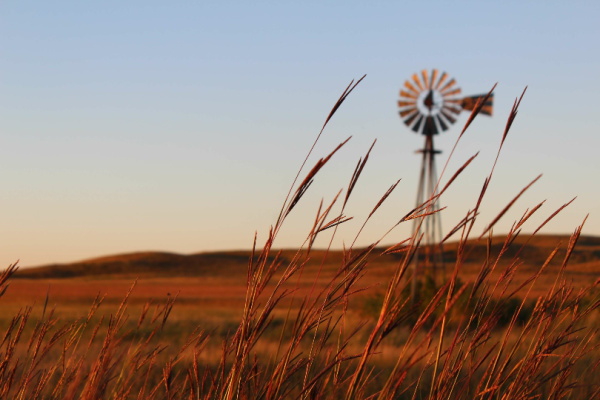Reviewing The Farmland Boom

The USDA’s recent cropland values report estimated values rising by an average of 8.1% in 2023. While slower than the 14.3% increase observed in 2022, the gains contribute to the large upturn in values since 2020. Using these USDA estimates, this week’s post takes a long-run view of where and how cropland values have changed.
Farmland Values Since 2020
As mentioned earlier, farmland values have surged higher since 2020. At the national level, cropland values increased 33% over the last three years.
Figure 1 plots the state-level changes since 2020. Northern Great Plains stands out as cropland values in Kansas (65%), Nebraska (57%), and South Dakota (50%) posted the largest gains. Values also posted sizable gains throughout the Corn Belt regions, ranging from 30% to 40% higher. Outside of the Midwest, the gains were more modest. For example, values were roughly 10% higher in Arkansas, Louisiana, and Mississippi.
It’s worth pausing for a second to mention that these changes are based on nominal values. In other words, the values don’t account for inflation. Given the economy-wide inflationary pressure, farmland value gains for some regions of the country – notably the South, Southwest, and West – could be disappointing when adjusted for inflation.

Figure 1. Change in Cropland Values, 2023 versus 2020. Data Source: USDA NASS.
Farmland Values Since 2010
For another perspective, Figure 2 shows state-level changes in cropland values since 2010. This time, however, the changes are reported as an average annualized rate of change. Again, the biggest gains have occurred in the northern Great Plains, followed by the Corn Belt. This isn’t too surprising as strong corn and soybean profitability have been a key driver of farm incomes since 2010. Furthermore, those Great Plains states have been where corn and soybean acreage expansions occurred.
Remember that the Rule of 72 tells us that gains above 7.2% would result in valuations doubling every 10 years. This is important for two reasons. First, an average annual increase greater than 7% sustained for over a decade will result in significant valuation changes. Second, seemingly small differences in annualized rates – such as 8.6% (North Dakota) versus 6% (Iowa) – can have significant effects over several years. To that point, cropland values in Iowa increased by 127% (or more than doubled) since 2010. Meanwhile, cropland values in North Dakota increased by a total of 217% during that same period.

Figure 2. Annualized Change in Cropland Values, 2023 versus 2010. Data Source: USDA NASS.
Wrapping It Up
While the overall farmland story has been positive, there are significant variations across regions and the underlying commodities and external factors. Overall, the national-level data underplays gains posted in the Midwest but overstates the reality for some in the South and West. Those looking to invest in farmland should consider the underlying fundamentals and keep these variations in mind.
While these data show no decreases in valuations, the last 15 years haven’t exactly been smooth sailing. Between 2014 and 2017, valuations in the Great Plains and Corn Belts were lower by as much as 12%. With an asset like farmland, where the long-term valuation trend is often favorable, short-term adjustments in the market can be easily overlooked in the data.
Still curious? The original AEI Premium post is packed with even more charts and maps, including pasture values. Join the network for agriculture decision-makers with a no-risk trial.